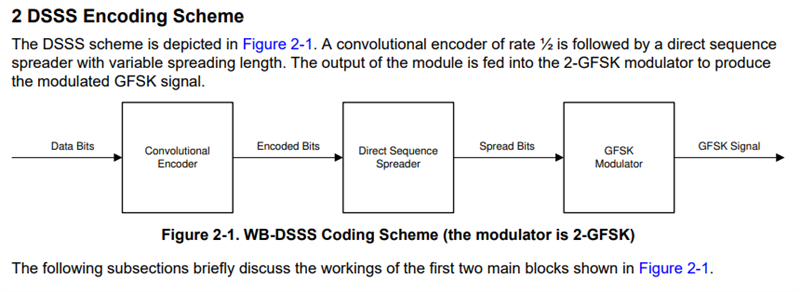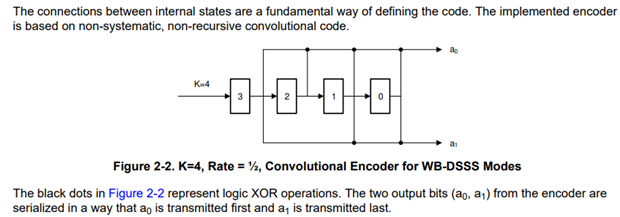Other Parts Discussed in Thread: CC1310
Tool/software:
Hi,
I am considering a migration to the CC1312PSIP using WB-DSSS 120kbps and DSSS = 1:2. I need to configure a SiLabs part to communicate with it for legacy reasons, but I can't find the details of the DSSS chipping code base and FEC.
Can you please answer the following:
1) What is the DSSS chipping code base for this mode?
2) What is the chipping code length?
3) What is the FEC 1:2? Is this the convolutional encoder?
Many thanks,
Andy








